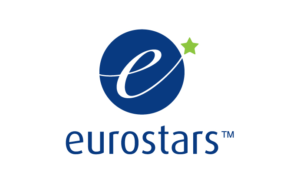

Acronym | SYNSTAR |
|---|---|
Grant Agreement ID | E114421 |
Implementation period | 01.09.2020. – 31.08.2023. |
Coordinator | Atrogi AB, Sweeden |
Partners | Latvian Institute of Organic Synthesis (LIOS), Latvia |
MBW/SU, Sweden | |
Maastricht University, The Netherlands | |
Excellerate Bioscience Ltd, United Kingdom | |
Programme | Eureca: Eurostars-2 |
Total costs | € 2,427,929 |
Costs for LIOS | € 209,995 |
Summary
Obesity is the accumulation of excess fat to the extent that health is negatively affected. The condition is rapidly becoming more common over the world and global estimates for obesity prevalence have tripled from 4.3% in1975 to 13.2% in 2016. Currently, international studies estimate that around one billion people are overweight, of which 500 million are classed as obese.
Obesity is a driver of a number of conditions, most notably type 2 diabetes, but also hypertension, dyslipidaemi,cardiovascular disease and cancer. Other symptoms and disease states that are related to overweight and obesity,such as sleep apnoea, joint pain, urinary incontinence, impaired fertility, depression, anxiety and functional limitations can also severely impair patients’ health and quality of life.
The underlying cause of obesity is the increased ready availability of highly caloric food in combination with a sedentary lifestyle and genetic factors that dispose towards energy storage. Treatment options are inadequate with lifestyle changes only being moderately effective and pharmacological options few, with low efficacy and hampered by adverse effects. Bariatric surgery,while effective, is reserved for the most serious cases of obesity because of the complexity and cost of treatment as well as risk of complications.
The SYNSTAR project will address this challenge and deliver a novel orally available compound, that stimulates theß2- and ß3-adrenergic receptors, for the treatment of obesity through a balanced increase of energy output from white fat and energy expenditure by thermogenesis.
The compound has the potential to be significantly more effective than current pharmacologic treatment and readily combinable with other therapies on the market or in the pipeline. The goal is to deliver at least one compound that meets the standards of a preCD.
